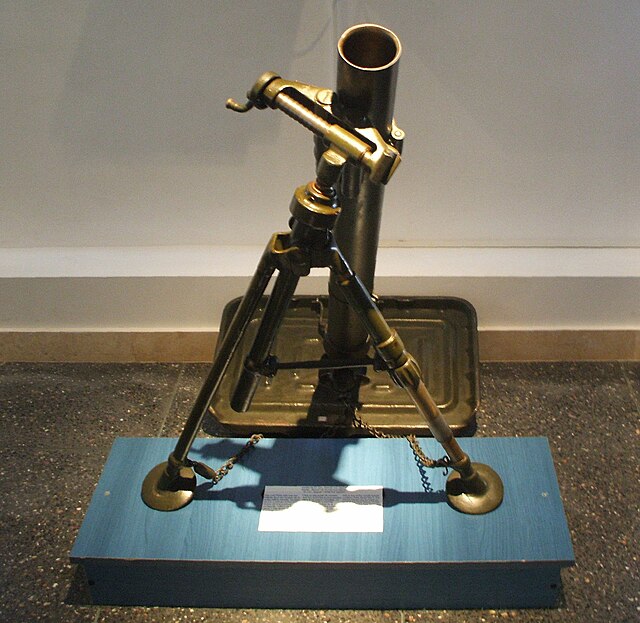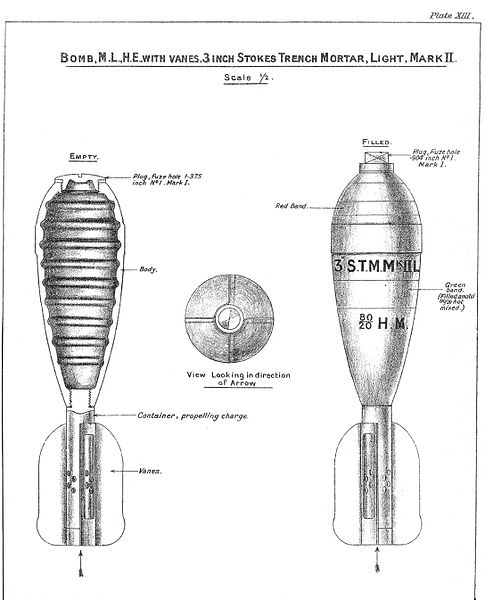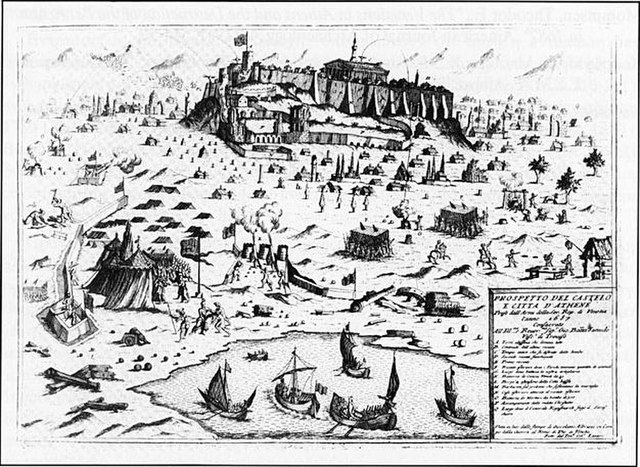The Brandt mle 27/31 mortar was a regulation weapon of the French army during the Second World War. Designed by Edgar Brandt, it was a refinement of the Stokes mortar. The Brandt mortar was highly influential, being licensed built or copied by numerous countries.
Brandt Mle 27/31 on display at the Romanian Navy Museum
Mk. II vaned HE bomb of Brandt's type for 3-inch Stokes mortar
A Senegalese Tirailleurs crew with a Brandt Mle 1927/31 mortar, December 1939.
A mortar is today usually a simple, lightweight, man-portable, muzzle-loaded cannon, consisting of a smooth-bore metal tube fixed to a base plate with a lightweight bipod mount and a sight. Mortars are typically used as indirect fire weapons for close fire support with a variety of ammunition. Historically mortars were heavy siege artillery. Mortars launch explosive shells in high-arching ballistic trajectories.
United States Army soldiers firing an M120 mortar (round visible in smoke) during the War in Afghanistan
Engraving depicting the Venetian siege of the Acropolis of Athens, September 1687. The trajectory of the shell that hit the Parthenon, causing its explosion, is marked.
German 7.5 cm Minenwerfer
Wilfred Stokes with example of his WWI mortar and bombs







